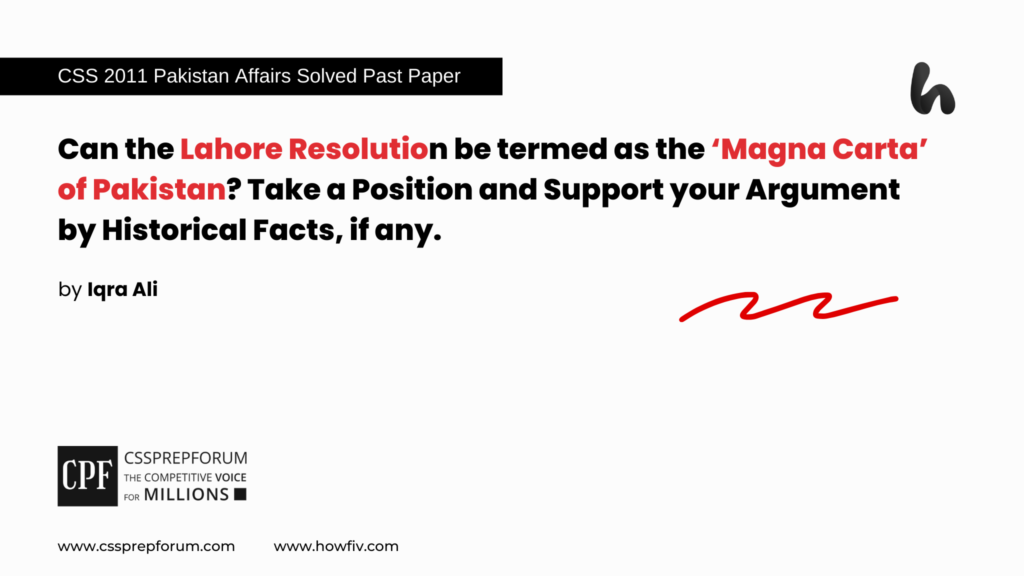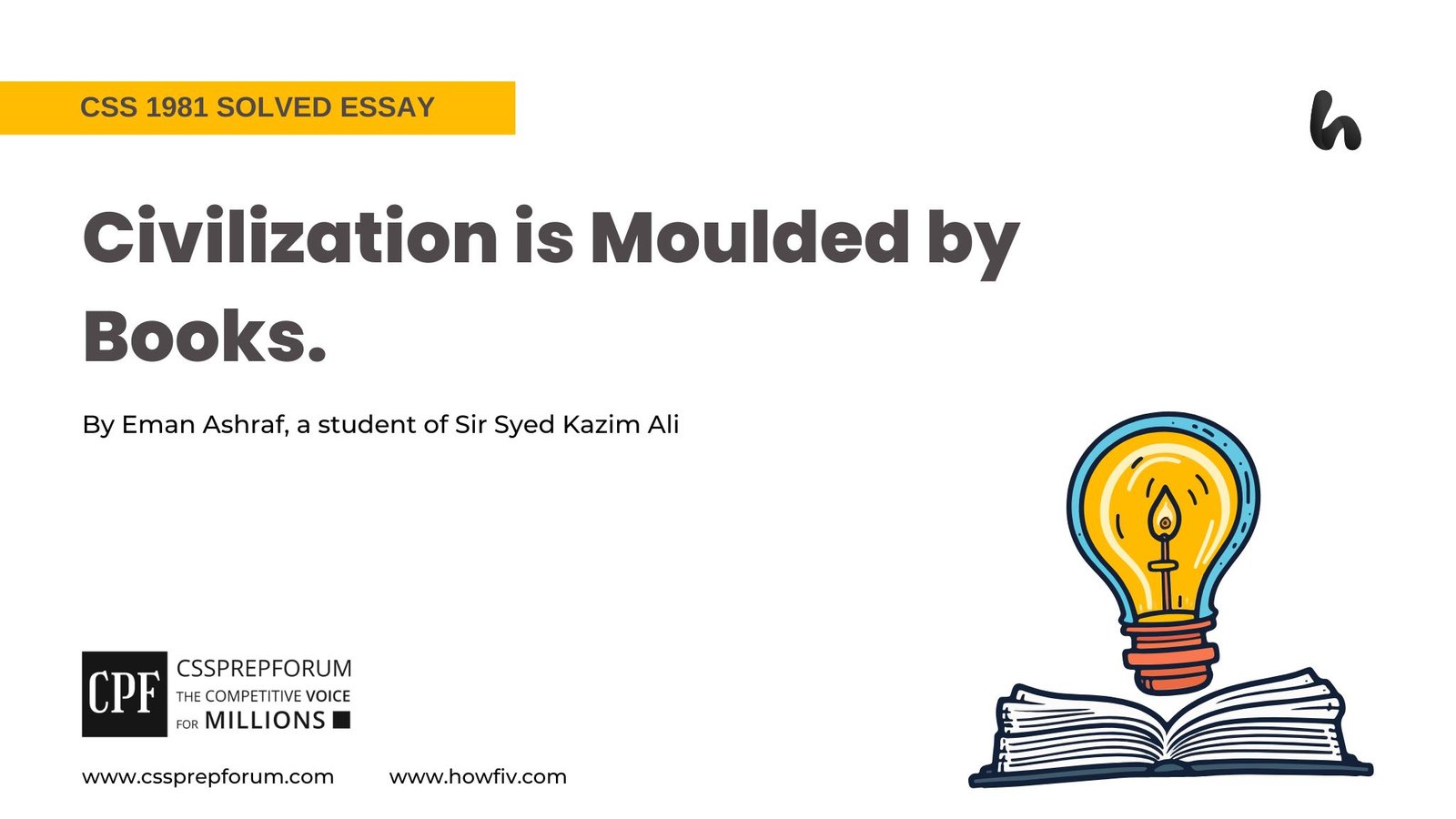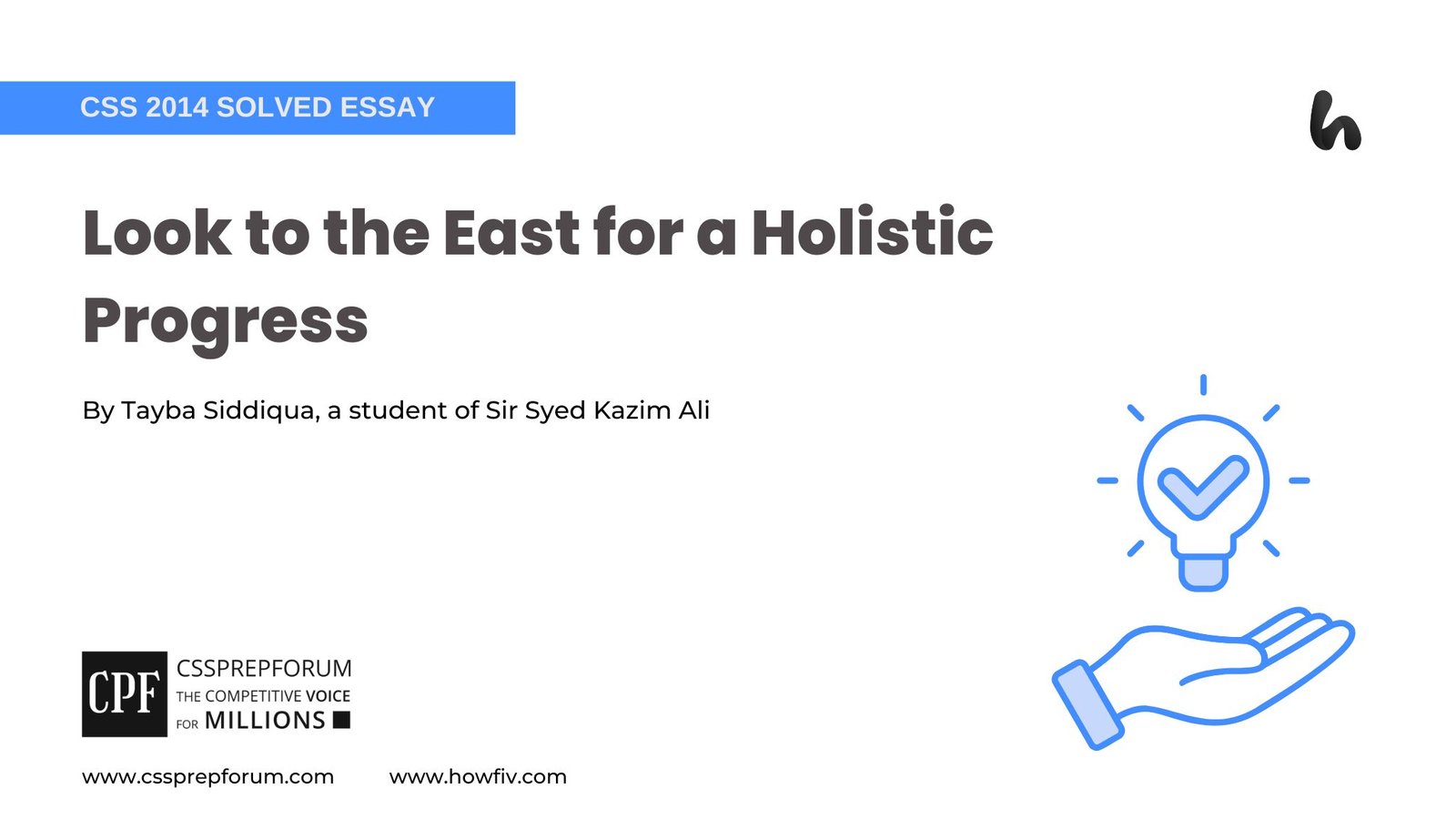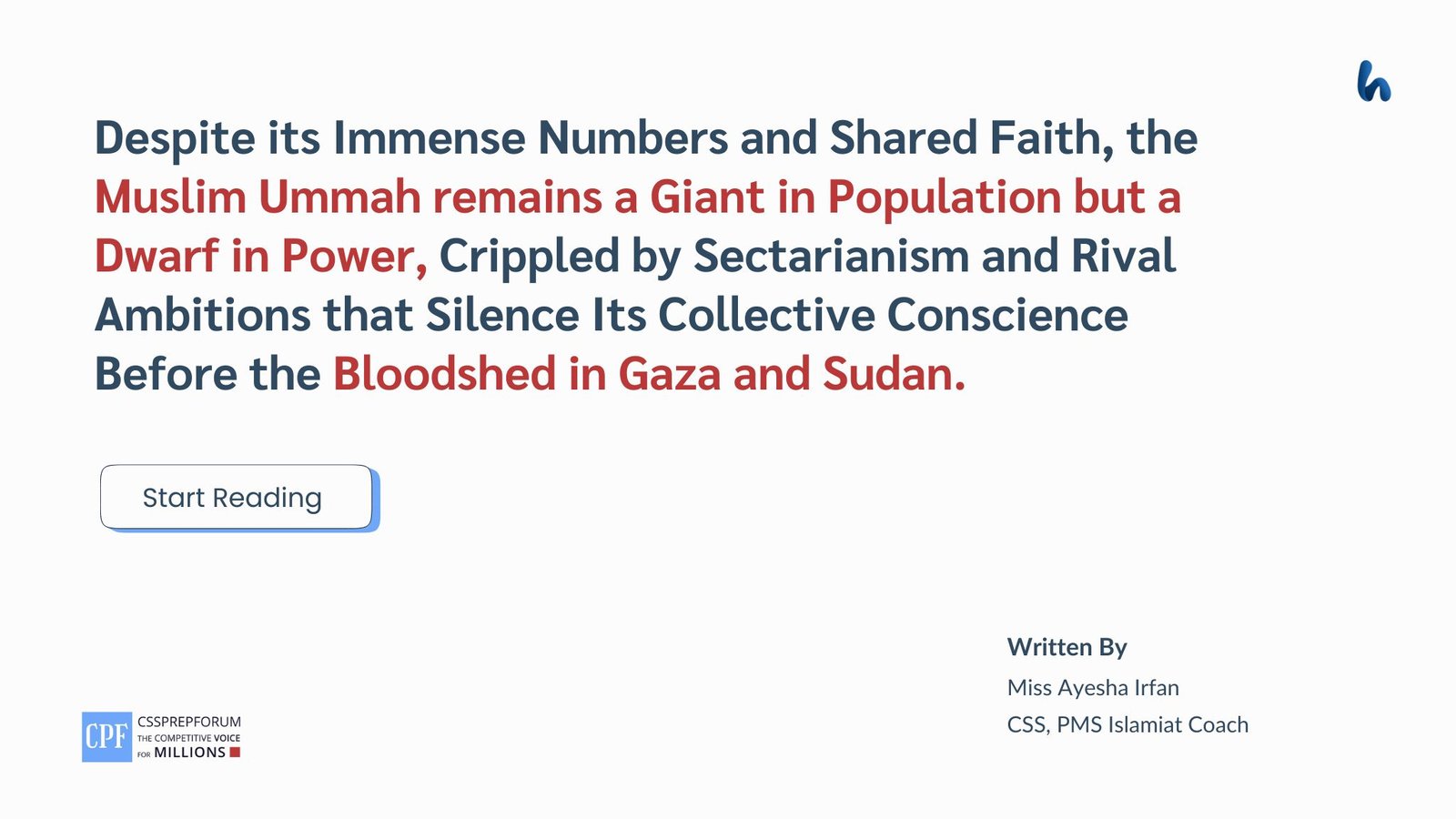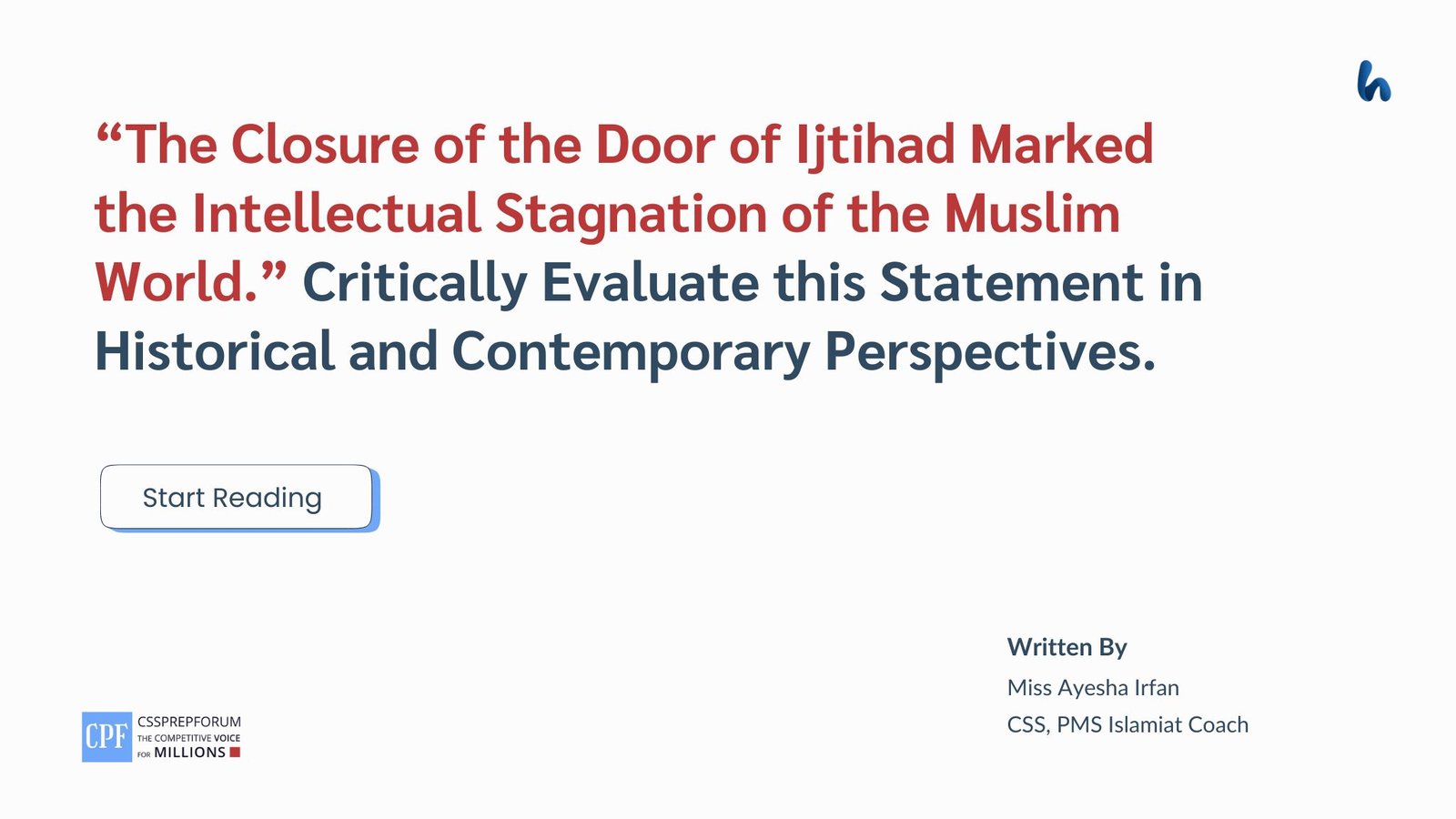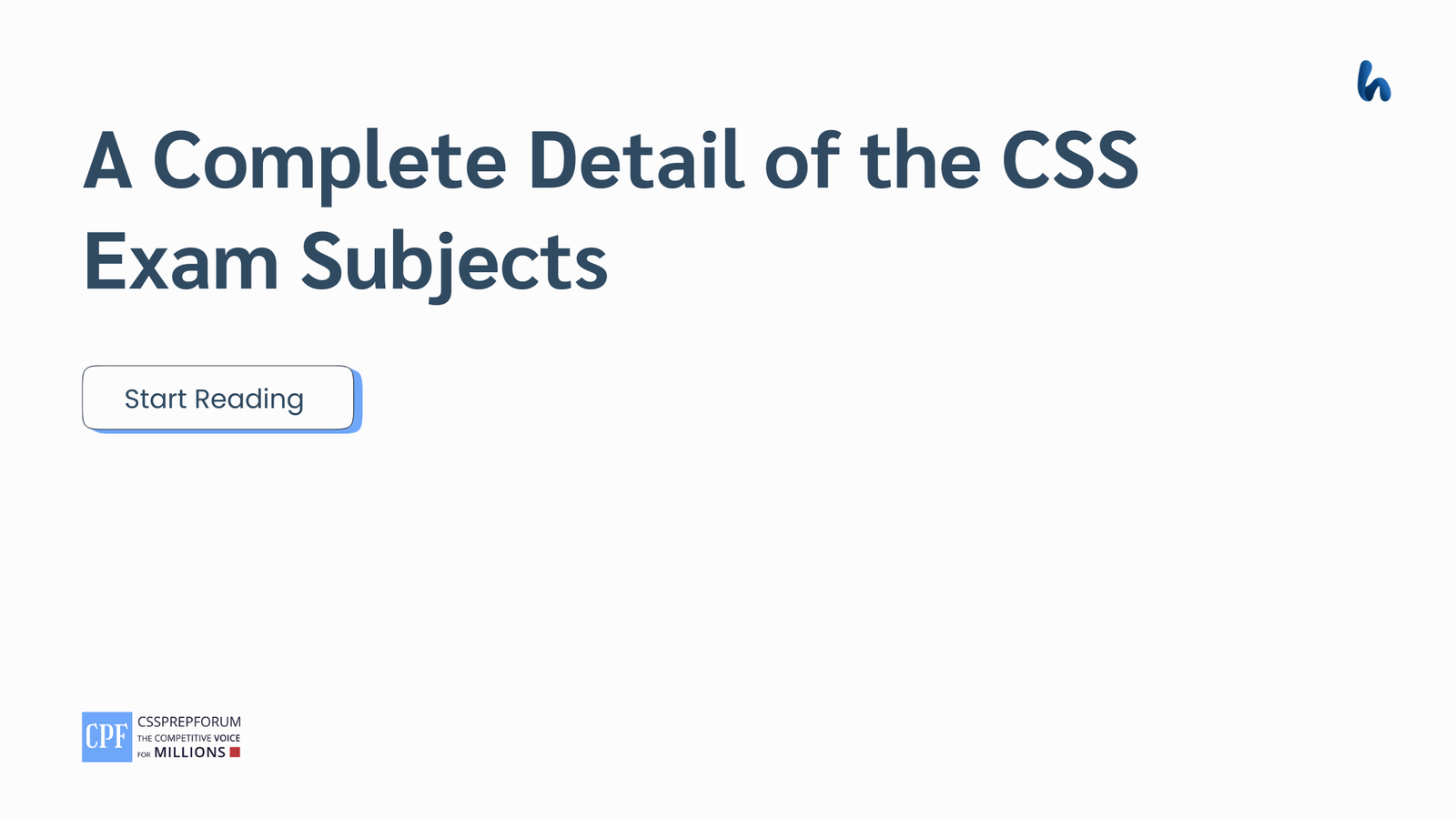CSS 2011 Solved Pakistan Affairs Past Papers | Lahore Resolution as the ‘Magna Carta’ of Pakistan
The following question of CSS Pakistan Affairs 2011 is solved by Miss Iqra Ali, the best Pakistan Affairs Coach, on the guided pattern of Sir Syed Kazim Ali, which he taught to his students, scoring the highest marks in compulsory subjects for years. This solved past paper question is uploaded to help aspirants understand how to crack a topic or question, how to write relevantly, what coherence is, and how to include and connect ideas, opinions, and suggestions to score the maximum.

Question Breakdown
In this question, the examiner has asked you to take a position on the stance: can the Lahore Resolution be termed as the ‘magna carta’ of Pakistan? Furthermore, the examiner has asked you to support your position with historical facts. So, start with an introduction that will include all the leading points of your answer. Then, write the main body and support your arguments and historical facts with evidence. Last, critically analyze and conclude your answer.
Outline
1-Introduction
2-Contextualizing Lahore Resolution by Drawing Parallels to Magna Carta
3-How Can the Lahore Resolution be Termed as the Magna Carta of Pakistan?
- ✓ Supporting Argument with Historical Fact: The Lahore Resolution of 1940 Laid the Foundational Framework for the Demand of a Separate Muslim State, Which Led to the Creation of Pakistan
- Evidence: Ahmad Sarwar and Kh. Mansur Sarwar aptly said in the book Trek to Pakistan that the Lahore session of the All-India Muslim League (AIML) proved a landmark in the history of South Asian Muslims. At that time, the governor of Punjab, H. Craik, had to admit that the results had clearly emerged from the session as Muslim opinion was now outwards, at least unanimous, in favor of the partition of India.
- ✓ Supporting Argument with Historical Fact: The Lahore Resolution of 1940 Represented a Power Shift in Colonial India from the British Government to Two Separate Nations, Challenging British Authority and Congress’s Dominance
- Evidence: Ahmad Sarwar and Kh. Mansur Sarwar aptly said in the book Trek to Pakistan that the Lahore session of the All-India Muslim League (AIML) proved a landmark in the history of South Asian Muslims. At that time, the governor of Punjab, H. Craik, had to admit that the results had clearly emerged from the session as the importance of the AIML had been immensely enhanced as a Muslim representative organization.
- ✓ Supporting Argument with Historical Fact: The Lahore Resolution of 1940 Established the Political and Ideological Rights of Muslims as a Distinct Nation, Initiating Constitutional Struggle to Attain a Separate Homeland for a Separate Nation.
- Evidence: Ahmad Sarwar and Kh. Mansur Sarwar aptly said in the book Trek to Pakistan that the Lahore session of the All-India Muslim League (AIML) proved a landmark in the history of South Asian Muslims. At that time, the governor of Punjab, H. Craik, had to admit that the results had clearly emerged from the session as Muslim opinion was now outwards, at least unanimous, in favor of the partition of India.
4-Critical Analysis
5-Conclusion

Answer to the Question
Introduction
The Lahore Resolution (1940), a resolution consisting of four hundred words, passed on 22nd -23rd March 1940, changed the destiny of the Muslims of the Indian Subcontinent. The Resolution abated the imminent threat of Hindu-dominated majority rule by establishing the foundation for the demand for a separate state. The following points illustrate how the Lahore Resolution can be termed the Magna Carta of Pakistan. First, it laid the foundational framework for the demand for a separate Muslim state, which led to the creation of Pakistan; the Magna Carta established the principles of Justice, equality, and the rule of law in England. Second, the Resolution represented a power shift in colonial India from the British Government to two separate nations, challenging British authority and Congress’s dominance; likewise, the Magna Carta represented a power shift by restricting monarchic authority and securing rights for barons. Last, the Resolution of 1940 established the political and ideological rights of Muslims as a distinct nation, initiating a constitutional struggle to attain a separate homeland for a separate nation. To conclude, it can be said that the Lahore Resolution can be termed the Magna Carta of Pakistan.
Contextualizing Lahore Resolution by Drawing Parallels to Magna Carta
The Lahore Resolution was passed in the 27th session of the All-India Muslim League (AIML) in Lahore on 23rd March 1940 in colonial India. It consisted of four hundred words, and AIML- the largest Muslim representative party, came up with a demand for a separate homeland for the Muslims. As Ahmad Syeed and Kh. Mansur Sarwar aptly said in the book Trek to Pakistan that the Lahore Resolution said that resolved that it is the considered view of this session of the AIML that no constitutional plan would be workable in this country or acceptable to the Muslims unless it is designed on the following basic principles viz that geographically contagious units are demarcated into regions which should be so constituted, with such territorial readjustments as may be necessary, that the areas in which the Muslims are majority as in the North-Western and Eastern Zones of India should be grouped to constitute Independent States in which the constituent units shall be autonomous and sovereign. Thus, the paramount clause of the Lahore Resolution called for independent states- the Muslim majority areas, ensuring cultural, religious, economic, and political autonomy. The following points show why it can be referred to as the Magna Carta as it established the political and ideological rights of Muslims as a distinct nation, as the Magna Carta established principles of freedom, justice, and the rule of law in England. Then, the Resolution represented a power shift in colonial India. It challenged British authority and Congress’s dominance. Likewise, the Magna Carta represented a power shift by restricting monarchic authority and securing rights for barons.
How Can the Lahore Resolution be Termed as the Magna Carta of Pakistan?
- ✓ The Lahore Resolution of 1940 Laid the Foundational Framework for the Demand of a Separate Muslim State, Which Led to the Creation of Pakistan
Indubitably, the Lahore Resolution of 1940 laid the foundational framework for the demand for a separate state. As I discussed, Jinnah provided a geographical sketch in the Resolution. Also, he portrayed the outer and inner look of the Muslim state. As a result, a vast majority of Muslims supported the Resolution. The idea of a separate state had the real meaning of freedom for them. Also, they felt that they could preserve their identity in a separate homeland. So, the idea became a symbol of nationalism and the ultimate goal of the League. Ahmad Sarwar and Kh. Mansur Sarwar aptly said in the book Trek to Pakistan that the Lahore session of the All-India Muslim League (AIML) proved a landmark in the history of South Asian Muslims. At that time, the governor of Punjab, H. Craik, had to admit that the results had clearly emerged from the session as Muslim opinion was now outwards, at least unanimous, in favor of the partition of India. After the Resolution happened, the League defined its goal, and reconciliatory efforts between the Congress and the League paused. The wise-spread Muslim nationalism enthusiastically demanded a separate Muslim state. For illustration, despite many efforts, the Cabinet Mission Plan of 1946 failed. Last, the 3rd June Plan formalized the creation of two independent states, India and Pakistan.
- ✓ The Lahore Resolution of 1940 Represented a Power Shift in Colonial India from British Government to Two Separate Nations, Challenging British Authority And Congress’s Dominance.
As the Lahore Resolution laid the foundational framework for the demand for a separate state, the Muslims never agreed to compensate for the demand. The league’s manifesto evolved from representing the rights of the Muslims to demanding a separate homeland for them. After the resolution, the League gained strength and became widely recognized as a Muslim representative party. Ahmad Sarwar and Kh. Mansur Sarwar aptly said in the book Trek to Pakistan that the Lahore session of the All-India Muslim League (AIML) proved a landmark in the history of South Asian Muslims. At that time, the governor of Punjab, H. Craik, had to admit that the results had clearly emerged from the session as the importance of the AIML had been immensely enhanced as a Muslim representative organization. So, the League’s demand challenged the British authority- a colonial power that had power over the Indian Subcontinent. Also, the demand challenged the Congress’s dominance because Hindus had a numeric preponderance over Muslims, and it was obvious that democratic India would have Hindu rule. After the disastrous experience with the Congress rule in 1937, the League never agreed to share power with the Congress. Thus, the resolution represented a power shift in colonial India.
- ✓ The Lahore Resolution of 1940 established the Political and Ideological Rights of Muslims as a Distinct Nation, Initiating Constitutional Struggle to Attain a Separate Homeland for a Separate Nation
As I discussed, the Resolution established the political and ideological rights of Muslims. In terms of politics, the League agenda evolved, representing a never-compromising stance of a separate state. In terms of ideology, the idea of a separate state meant the perseverance of distinct ideology as a separate nation. Ahmad Sarwar and Kh. Mansur Sarwar aptly said in the book Trek to Pakistan that the Lahore session of the All-India Muslim League (AIML) proved a landmark in the history of South Asian Muslims. At that time, the governor of Punjab, H. Craik, had to admit that the results had clearly emerged from the session as Muslim opinion was now outwards, at least unanimous, in favor of the partition of India. The resolution demonstrated that a separate state was the only means to have socio-political and religious freedom. After the resolution, Jinnah started the constitutional struggle to attain a separate homeland for the Muslims of the Indian Subcontinent.
Critical Analysis
In a critical analysis, the Lahore Resolution of 1940 established a foundational framework for the creation of Pakistan. However, according to some scholars, politicians, historians, and researchers, the Resolution contained the word of the states, not the state. The question arises whether he asked for two separate states or two states of a Muslim homeland. The succeeding events and speeches of Jinnah showed that he emphasized the idea of two separate states. For illustration, a resolution was passed in 1941 by the League in Madras. According to the resolution, the league was striving for one independent Muslim state. Then, Jinnah wrote a preface to India’s Problems of Her Constitution, and in the preface, he used the word Independent state while referring to the Lahore Resolution. Last, after 1944, he never used the word states in the sessions of the League. In Ghandi-Jinnah’s talks in 1944, he stated that the two states mentioned in the Resolution would be provinces of a state, not of two states.
Conclusion
To conclude, the Lahore Resolution of 1940 can be termed as the Magna Carta of Pakistan because it laid the foundational framework for the demand for a separate Muslim state, which led to the creation of Pakistan like the Magna Carta established the principles of Justice, equality, and rule of law in England. Then, it represented a power shift in colonial India from the British Government to two separate nations, challenging British authority and Congress’s dominance; likewise, the Magna Carta represented a power shift by restricting monarchic authority and securing rights for barons. Last, the Resolution of 1940 established the political and ideological rights of Muslims as a distinct nation, initiating a constitutional struggle to attain a separate homeland for a separate nation.
CSS 2011 Solved Pakistan Affairs
| 2- | Briefly Analyse and Discuss the Contribution of the Religious Reformers – Sheikh Ahmad Sirhindi, Shah Waliullah, Syed Ahmad Barelvi and the Like – in the Growth of Muslim Consciousness in the South-Asian Subcontinent. |
| 3- | John Plamenatz Defines ‘Nationalism’ as “The Desire to Preserve or Enhance Peoples National or Cultural Identity, When that Identity is Threatened or the Desire to Transform or Even Create it When it is Felt to be Inadequate or Lacking.” In the Light of above Definition, Briefly but Comprehensively Discuss the Respective Roles Played by Sir Syed Ahmad Khan, Allama Iqbal and the Quaid-E-Azam in Strengthening the Muslim Nationalism in India. |
| 4- | Describe the Main Contents and Relative Importance of the Lucknow Pact and Delhi Muslim Proposals and their Respective Impact on the Subsequent Political Developments in India. |
| 5- | Can the Lahore Resolution be termed as the ‘Magna Carta’ of Pakistan? Take a position and support your argument by historical facts, if any. |
| 6- | Give a Critical Appraisal of the Constitutional Crisis/Crises Initiated by the Controversial Actions taken by Governor General Ghulam Muhammad and Endorsed by the Superior Court of Pakistan. Discuss and Analyse its Effects on the Subsequent History of Pakistan. |
| 7- | Federalism Has Been a Continuing Cause of Political Tension in our Country. Will the 18th Amendment Made in the Constitution by the Present Government Solve this Issue Once for All? Take a Position and Support With Your Argument. |
| 8- | Given the Problems that Pakistan is Facing Today, What is Your Vision of Pakistan in the Year 2011? How, in Your Opinion, can be its Internal and External Problems solved? |
CSS Solved Past Papers’ Essays
Looking for the last ten years of CSS and PMS Solved Essays and want to know how Sir Kazim’s students write and score the highest marks in the essays’ papers? Then, click on the CSS Solved Essays to start reading them.
CSS Solved Essays
CSS Solved General Science & Ability Past Papers
Want to read the last ten years’ General Science & Ability Solved Past Papers to learn how to attempt them and to score high? Let’s click on the link below to read them all freely. All past papers have been solved by Pakistan’s top CSS GSA coach having the highest score of their students.
General Science & Ability Solved Past Papers

